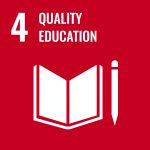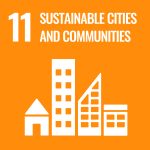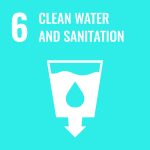    |
“Stray LOHAS”: Stray Animals Reduction and Fulfilment of Welfare Project |
NCHU president
Dr. Fuh-Jyh Jan |
The animal welfare in Taiwan’s public and private shelters is poor. Each government-employed veterinarian is responsible for nearly 70 shelter animals every day, and there are over 150,000
stray dogs in the community that urgently need veterinarians for spaying and neutering.
Vietnam, Thailand, and Malaysia are facing similar or even more severe challenges, but local veterinary schools and student organizations struggle to make an impact due to a lack of
clinical knowledge and skills. In contrast, the United States has systematized “shelter medicine” education and incorporated it into veterinary training.
Since 2018, USR StrayLOHAS project has trained over 40 veterinarians from National Chung Hsing University who are capable of performing efficient spaying and neutering in rural areas. Over 200 university students and assistants have participated in spaying and neutering work in central Taiwan, and the program has been extended to Guam and Vietnam. Some graduates have gone on to work in animal protection organizations in Taiwan and Malaysia.
The [Phase IV] plan will revise the “Animal Medical & Spaying and Neutering Module” and expand it to veterinary schools and student organizations in Vietnam, Thailand, and Malaysia. In Taiwan, the program will integrate academic credits and gradually introduce knowledge of American shelter medicine to achieve the goals of SDGs 3, 4, 15, and 17. |
   |
“Twin Pulses of Green and Dry: United in Water Stewardship” – Two-River Basin Guardian Laboratory |
Chang-Yen Lee |
This project aims to promote the sustainable development of the Luchuan River, Hanxi River, and National Chung Hsing University living circle in Taichung City. It particularly focuses on the
challenges faced by the Luchuan and Hanxi river basins, such as the disconnection of local historical and cultural memories, environmental pollution, and insufficient civic participation.
The project intends to achieve its goals through preserving the cultural and historical landscapes and memories of the river basins, fostering environmental protection awareness, creating spaces for social practice, promoting integration of the elderly and people with disabilities, and enhancing community resilience.
The ultimate aim is to create a Luchuan-Hanxi-National Chung Hsing University living circle that embodies both humanistic care and aesthetics, in order to realize the Sustainable Development
Goals of SDG4 (Quality Education), SDG10 (Reduced Inequalities), and SDG11 (Sustainable Cities and Communities). |
   |
Co-Learning of Horticultural Therapy at Shuiwei
Community |
Chen-Fa Wu |
In the past decade, the percentage of elderly residents aged 65 and above in Shuiwei Community, Houlong Township, Miaoli County, has risen to 24.2%, far exceeding the threshold for a super-aged community. This project is based on the principles of place attachment theory and local action guidelines for aging in place, aiming to implement holistic care in Shuiwei Community through horticultural therapy. It is jointly executed by the College of Agriculture and Natural Resources at National Chung Hsing University and the Changhua Christian Dementia Center. The main focus of the three-year plan is as follows:
1. In 2025, the focus will be on promoting cognitive development and building social relationships for the elderly.
2. In 2026, the focus will be on enhancing physical rehabilitation for the elderly and establishing co-living spaces.
3. In 2027, the focus will be establishing sustainable communities and promoting successful healthy ageing.
4. From 2025 to 2027, the focus will be on cultivating expertise and research talent in horticultural therapy. |
   |
Starting from Nantou’s Qingliu, Zhongyuan, and Meiyuan
tribes to create a healthy and thriving indigenous
homeland |
Pin Ju Chueh |
The Qingliu, Zhongyuan, and Meiyuan tribes near the National Chung Hsing University Huisun Forest Farm are grappling with significant challenges, including increasing migration, an aging
population, and shortages in economic and medical resources. This project seeks to enhance these communities’ overall health, wellbeing, and quality of life by promoting sustainable community management. The plan focuses on four key areas: health promotion, technological medical care, talent development, and tribal transformation. By fostering strong connections with local Indigenous communities and fulfilling social responsibilities, the project aims to drive comprehensive community development, including industrial advancement and preserving and integrating Indigenous culture. |
   |
Environmental resilience and sustainability—ecological
restoration for one health in forest, river and village |
Sheue, C. R |
Stream is the mother of life, but many streams and rivers in Taiwan have turned into deep ditches as their channels have been confined by concrete walls and barriers, interrupting the flow and losing vitality. Members of our team purchased land adjacent to Zhong Gua River (Beishan Village, Guoxing Township, Nantou) in the upper reaches of the Wu River and advocated for restoration of the stream. They received support from the Agency of Rural
Development and Soil and Water Conservation (ARDSWC), which ultimately replaced some concrete bank protection and ground sills with natural rock structures in 2023. This action was the first river restoration in the history of stream management in Taiwan. River restoration is of great significance for flood control, water conservation and climate change. Consequently, it
has attracted much attention and attracted many visitors to Zhong Gua River. However, the local community faces major challenges due to loss of rural momentum and inadequate education resources in this rural area. This project aims to exploit opportunities from this river revitalization. While monitoring and restoring the environment, it cultivates talent, and supports rural education. It interfaces with the local community to achieve one health for the forest (mountain vegetation), river (stream) and village (community) in the pursuit of excellence. It is hoped that it can become an inspirational model of river rewilding as intended by ARDSWC. |